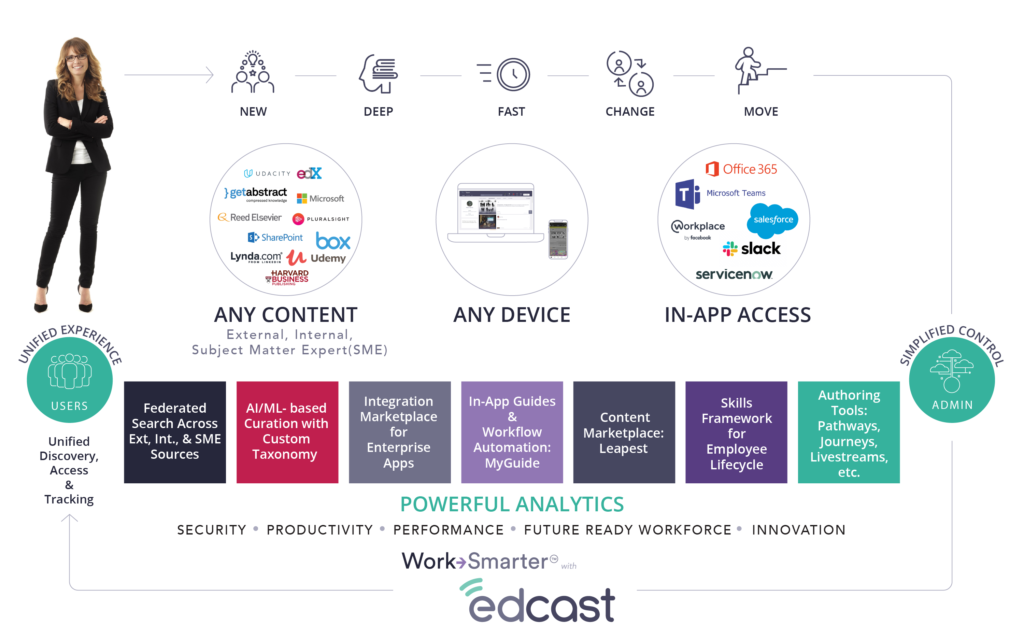Productivity is the foundation of economic growth and competitiveness for organizations and countries. At the corporate level, productivity is calculated by measuring a company’s net sales relative to employee labor hours. By that measure, we are facing a crisis.
Based on various reports and studies as well as my personal interactions, it’s evident that most people in the US workforce are overworked, and yet we have the paradox of low productivity. Despite massive advancement in workforce technology and investments in IT tools by organizations, there is a prolonged decline in US workforce productivity, per BLS. This should be a major cause of concern for all CEOs and leaders worldwide. After all, increasing productivity is the leading indicator for long term profitable growth.
So why are IT investments not delivering what they promised? The decline in productivity for the past two decades is hurting long-term corporate profits and is exacerbating a massive income gap affecting a majority of Americans. My conclusion is………….
Information Overload
The abundance of IT tools has ensured availability of large scale information to anyone, at any time, and at faster speeds. While that is exciting, it causes information overload, a reality that makes employees unproductive. Let me use my own situation: every day, I have 100+ direct messages (DMs) and dozens of channels on Slack vying for my attention. Add in hundreds of emails and dozens more DMs/groups on WhatsApp, text messages on mobile, notifications on intranets, Salesforce, O365, GSuite, Workday, ServiceNow and other business applications we use at EdCast. This overload is a common situation across most knowledge workers.
Each of these messages and notification requires action to get work done, to be productive. While these tools provide good information, we are drowning in information. Yet, we are starving for insights from these IT tools. None provide the ‘knowledge and contextual insights’ to eliminate sending return messages and notifications. There is no context in the workflow that can take action or automate some of these workflows.
A number of studies validate this conclusion: about twenty percent of knowledge workers waste time searching and organizing the knowledge they need every day. That is a loss of one full day per week! Additionally, that knowledge they need is spread out across a broad base of resources, everything from SharePoint to Box to O365 and more as well as paid content sources, other workers and the web. No wonder we search.
Various studies* have reported that approximately 20% of knowledge workers’ time is wasted searching and organizing the knowledge they need to perform their work. 20% is 1 full day in a 5 day week, which is a massive loss. The enterprise knowledge needed to perform workflow and tasks is fragmented across 1000’s of internal repositories (Sharepoint, Box, Dropbox, Confluence, etc), external paid and premium sources, free and open-source sites and Subject Matter Experts (SMEs) tacit knowledge.

Plugging the 20% Productivity Gap with Future of Work
Thus, the paradox: An overload of tools puts our productivity at risk. How do we address it?
Let’s first address how the very nature of our work today has changed as well as the changes in the workforce and the implications of the digital disruption. We are in the midst of seismic changes in work. EdCast has made it our mission to study dozens of Fortune 500 companies. Our Future of Work framework addresses the cause and effects in three core dimensions:
To understand this low productivity paradox, we need to understand the very nature of work that is changing, the workforce demographic changes and digital disruption of the 4th industrial revolution implications on how the work is performed and who performs it. These seismic changes are underway and our team at EdCast has for many years studied the cause and effect across dozens of Fortune 500 companies. Based on experience we have developed a Future of Work framework from the lens of three core dimensions:
- What/who does the work and who handles the workflow?
- How does the knowledge flow through the organization in order to get the work and workflow completed?
- Where/how is the work performed?
The Future of Work requires a framework of how people, technology, knowledge, automation, and work all come together in a holistic way to achieve high productivity with employee wellness.
Future of Work Framework, Layer 1 ~ What & Who
This layer is the foundation for tasks, business processes, workflows as well as who is best suited to execute them. With the growth of a digital workforce, from companies like Automation Anywhere, UI Path, etc., there is a need to fundamentally rethink which tasks and business processes are best suited for automation or semi-automation, and which can be best executed by human workers.
The task of identifying the opportunities to automate is no simple matter. Upfront it might not be obvious at first to see which workflow and tasks are suitable. In this case, the second layer of the framework can be added: utilizing MyGuide’s intelligence to find the most commonly used, time-consuming and repetitive workflows that are ripe for automation.
Future of Work Framework, Layer 2 ~ How
Every employee needs real-time access to knowledge as well as workflow guidance on how to perform the task. The Knowledge Cloud is the infrastructure layer for the knowledge economy enterprises. For the Future of Work, we need to provide the right knowledge to the right user, within the right context. That context is where the work is being done.
EdCast uses AI/ML to create a taxonomy for each enterprise. That provides a basis for personalization, aggregation, and curation of all external, internal and SME content from all sources. This helps plug the 20% of productivity drain by surfacing knowledge right in the business apps of Layer 3. Typically, those apps are isolated from knowledge. Adding in that deep context drives learning right into the flow of work.
In addition, EdCast’s MyGuide offers the How-To guides and intelligence on the actual workflows. It can assess which parts are ready for automation as well as aid the user to perform process steps by using its “do it for me” automation. This complements and feeds into any RPA bots, such as Automation Anywhere / UI Path.
Lastly, EdCast’s deep learning/skilling capability with Leapest augments the human workforce to upskill and maintain its edge to do high-value work that robots would require many years to learn.
Future of Work Framework, Layer 3 ~ Where
The layer of where has become a battleground for the intelligent digital workspace and thus the key to Future of Work. Many categories fall into this layer, the goal being a unified experience for users. That creates healthy competition and overlap. A deeper dive into layer three shows four major sub-categories:
Layer 3.1 Communications & Collaboration: In order to coordinate workflow, we need the ability to provide synchronous live messaging, virtual meetings and collaboration to everyone on every device. Slack, Zoom, MS Teams, FB Workplace are all great platforms. They are winning over Webex, Skype, and GoToMeeting for the right reasons. The real need in this space is real-time knowledge. Employees need access from a knowledge cloud right in the flow of work. The EdCast Knowledge Cloud delivers in-app knowledge based on the context of what is in one of those apps. That drives huge productivity gains to those tools.
Layer 3.2 Unified Access to Apps & Workflows: We all know there are a plethora of apps out there. VMWare’s WorkspaceONE and Citrix Workspace deliver a great experience of single sign-on secured access to all other apps. ServiceNow offers the tools to run IT and HR workflows. What is needed, however, is the user experience of unified access. The EdCast Knowledge Cloud provides that access to knowledge and content which all the major providers in this category.
Layer 3.3. Business Apps: Think about all the applications that run the business: sales, marketing, finance, HR, office productivity, and more. These are the System of Action where work gets done. Most of these tools do not come with any contextual knowledge to help improve productivity. But the EdCast Knowledge Cloud has integrated many apps (SFDC, O365, and more) to support the user to operate from within their app and still easily gain knowledge.
Layer 3.4 Enterprise Storage & Collaboration: While adoption to cloud-based storage from Dropbox, Box, GDrive, Sharepoint Online, and OneDrive has increased the ability to share documents, it has also made it exponentially difficult to discover the right content across these cloud storage and on-prem Sharepoints, intranets and network drives for the contextual workflow actions. Make it easier to find diverse data and critical knowledge with EdCast integration and discovery.
We are entering a new era of workforce productivity tools. Each of these can leverage the AI-powered Knowledge Cloud with embedded relevant insights into the flow of work. This new capability makes tasks and business processes run more effectively and automates workflows for routine work, to help achieve growth and profitability.
Talk to us today about what we can do to help your challenges.
References
- “According to a McKinsey report, employees spend 1.8 hours every day—9.3 hours per week, on average searching and gathering information. Put another way, businesses hire 5 employees but only 4 show up to work; the fifth is off searching for answers, but not contributing any value.” Source: Time Searching for Information.
- “19.8 percent of business time – the equivalent of one day per working week – is wasted by employees searching for information to do their job effectively,” according to Interact. Source: A Fifth of Business Time is Wasted Searching for Information, says Interact
- IDC data shows that “the knowledge worker spends about 2.5 hours per day, or roughly 30% of the workday, searching for information….60% [of company executives] felt that time constraints and lack of understanding of how to find information were preventing their employees from finding the information they needed.” Source: Information: The Lifeblood of the Enterprise.
- https://hbr.org/2015/06/conquering-digital-distraction
- The Information Overload Research Group, a nonprofit consortium of business professionals, researchers, and consultants, reports that knowledge workers in the United States waste 25% of their time dealing with their huge and growing data streams, costing the economy $997 billion annually.
- https://hbr.org/2015/06/conquering-digital-distraction



